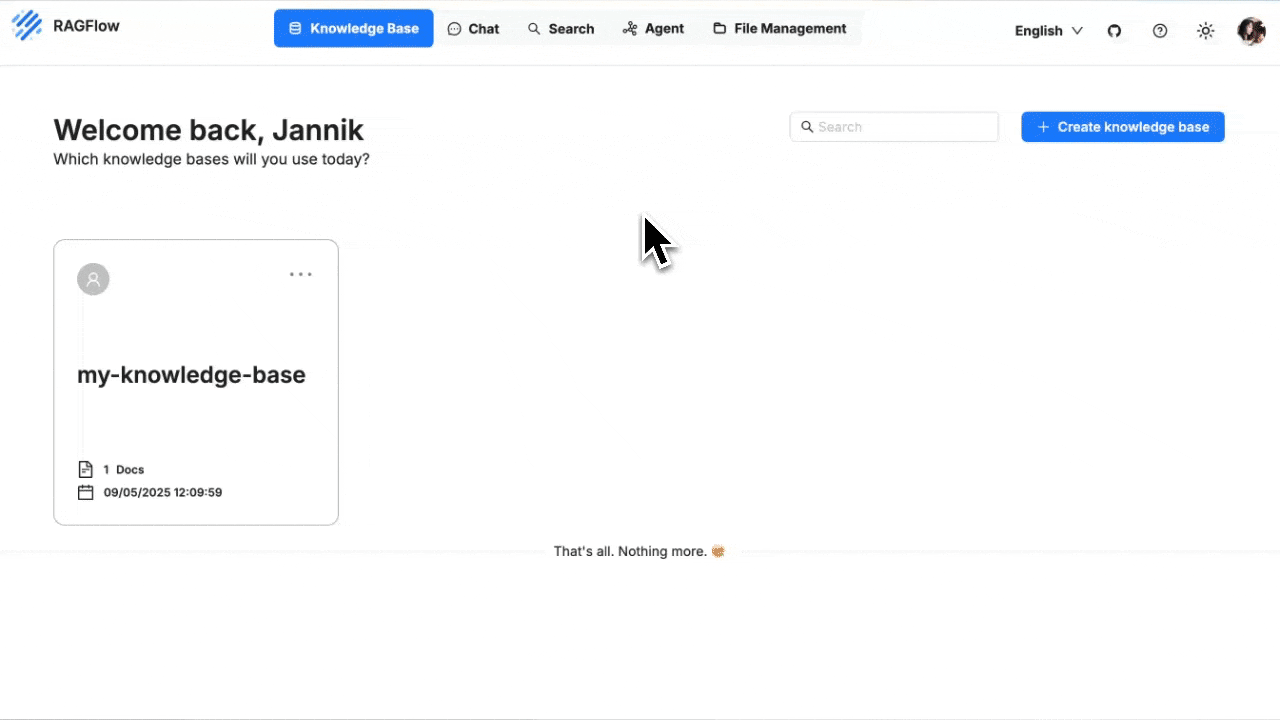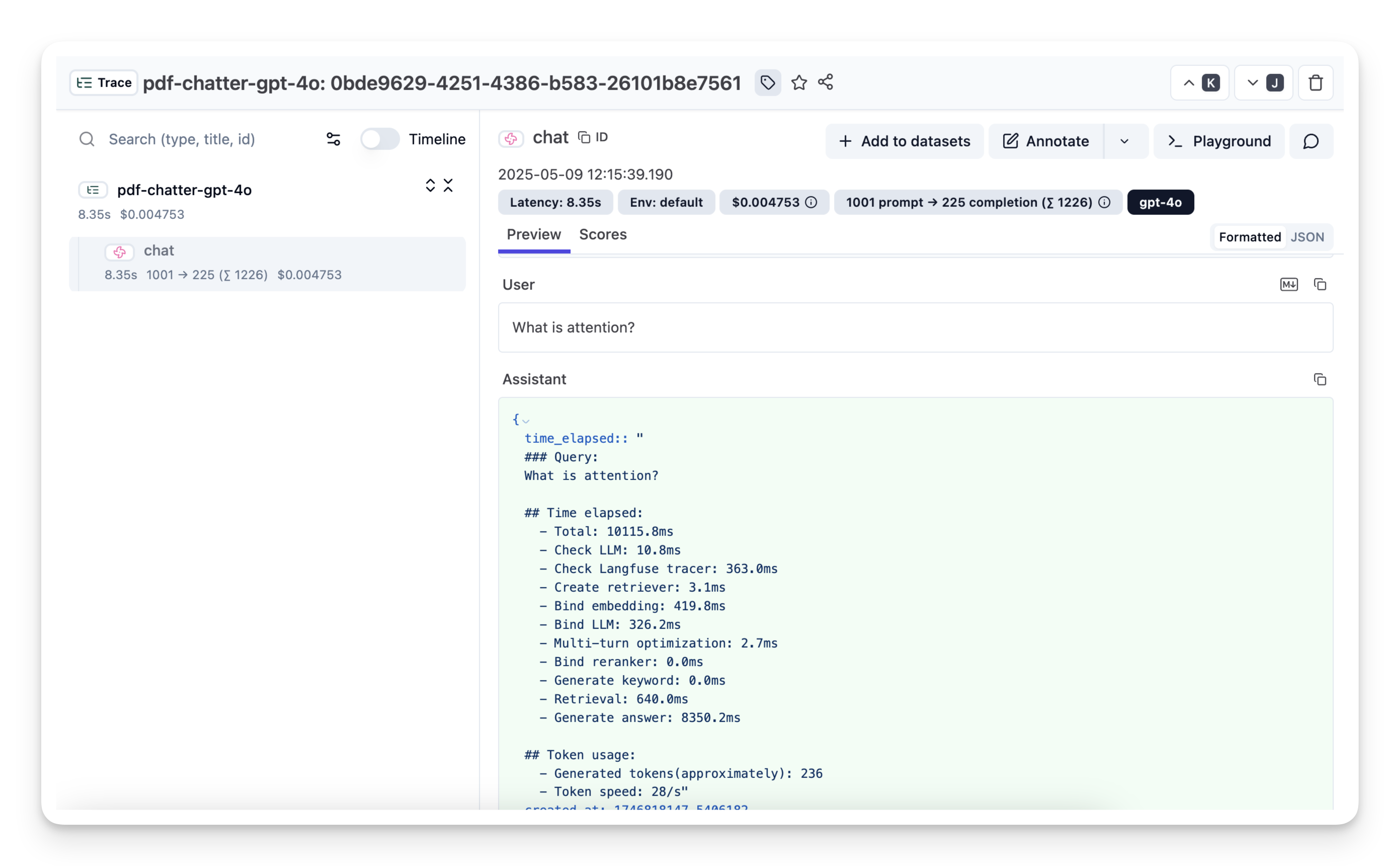| 123456789101112131415161718192021222324252627282930313233343536373839404142434445464748495051525354555657585960616263646566676869707172 |
- ---
- sidebar_position: 9
- slug: /tracing
- ---
-
- # Tracing
-
- Observability & Tracing with Langfuse.
-
- ---
-
- :::info KUDOS
- This document is contributed by our community contributor [jannikmaierhoefer](https://github.com/jannikmaierhoefer). 👏
- :::
-
- RAGFlow ships with a built-in [Langfuse](https://langfuse.com) integration so that you can **inspect and debug every retrieval and generation step** of your RAG pipelines in near real-time.
-
- Langfuse stores traces, spans and prompt payloads in a purpose-built observability backend and offers filtering and visualisations on top.
-
- :::info NOTE
- • RAGFlow **≥ 0.19.0** (contains the Langfuse connector)
- • A Langfuse workspace (cloud or self-hosted) with a _Project Public Key_ and _Secret Key_
- :::
-
- ---
-
- ## 1. Collect your Langfuse credentials
-
- 1. Sign in to your Langfuse dashboard.
- 2. Open **Settings ▸ Projects** and either create a new project or select an existing one.
- 3. Copy the **Public Key** and **Secret Key**.
- 4. Note the Langfuse **host** (e.g. `https://cloud.langfuse.com`). Use the base URL of your own installation if you self-host.
-
- > The keys are _project-scoped_: one pair of keys is enough for all environments that should write into the same project.
-
- ---
-
- ## 2. Add the keys to RAGFlow
-
- RAGFlow stores the credentials _per tenant_. You can configure them either via the web UI or the HTTP API.
-
- 1. Log in to RAGFlow and click your avatar in the top-right corner.
- 2. Select **API ▸ Scroll down to the bottom ▸ Langfuse Configuration**.
- 3. Fill in you Langfuse **Host**, **Public Key** and **Secret Key**.
- 4. Click **Save**.
-
- 
-
- Once saved, RAGFlow starts emitting traces automatically – no code change required.
-
- ---
-
- ## 3. Run a pipeline and watch the traces
-
- 1. Execute any chat or retrieval pipeline in RAGFlow (e.g. the Quickstart demo).
- 2. Open your Langfuse project ▸ **Traces**.
- 3. Filter by **name ~ `ragflow-*`** (RAGFlow prefixes each trace with `ragflow-`).
-
- For every user request you will see:
-
- • a **trace** representing the overall request
- • **spans** for retrieval, ranking and generation steps
- • the complete **prompts**, **retrieved documents** and **LLM responses** as metadata
-
- 
-
- ([Example trace in Langfuse](https://cloud.langfuse.com/project/cloramnkj0002jz088vzn1ja4/traces/0bde9629-4251-4386-b583-26101b8e7561?timestamp=2025-05-09T19%3A15%3A37.797Z&display=details&observation=823997d8-ac40-40f3-8e7b-8aa6753b499e))
-
- :::tip NOTE
- Use Langfuse's diff view to compare prompt versions or drill down into long-running retrievals to identify bottlenecks.
- :::
|
